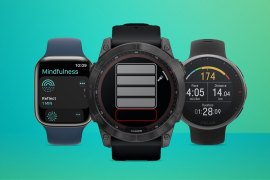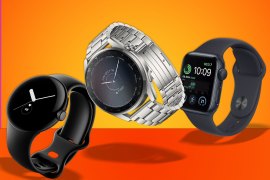Garmin Fenix 7 review: all-round brilliance
The do-it-all adventure watch now with solar-boosted battery life and more accurate GPS - is it the best sports watch around?

Stuff Verdict
It comes in many forms, but whichever you go for, the Garmin Fenix 7 remains the best all-rounder outdoors adventure watch you can get.
Pros
- Outstanding battery life
- Excellent durability
- Offline mapping
Cons
- Bulky on the wrist
- Pricey
Introduction
It was really only a few years between generations, but for fitness fanatics, the wait for a successor to Garmin’s top-tier GPS sports watch felt like forever. The Garmin Fenix 7 sticks with the familiar rugged, outdoors-ready design but adds more firepower in two key areas – longevity and location accuracy – plus a handful of new features.
On the range-topping 7X Solar edition I tested, battery life with location tracking enabled has been boosted from 60 to 89 hours, and solar-harvesting performance improved by 200%. You also get military-style, multi-band GPS that can better track your runs, rides and off-beat adventures. Plus a colour touchscreen and navigable colour TOPO maps.
Like its predecessor, the new Fenix 7 is built for bossing almost any sport. It packs the most complete set of training, performance and analysis features, across the widest range of activities, of any Garmin sports watch. New highlights include real-time stamina estimates, a visual race predictor – and it even comes with a pickleball profile. That’s all backed by a comprehensive suite of tools for tracking daily health and wellness, plus the smartwatch skills Garmin now offers on its increasingly clever watches.
This is a watch with the potential to be top dog. And so it should, what with prices sailing north of four figures for the premium editions. Is it worth that adventurous investment?
Review initially published 18 January 2022
How we test wearables
Every smartwatch and fitness tracker reviewed on Stuff is worn 24/7 throughout the testing process. We use our own years of experience to judge general performance, battery life, display, and health monitoring. Manufacturers have no visibility on reviews before they appear online, and we never accept payment to feature products.
Find out more about how we test and rate products.
Garmin Fenix 7 price & competition

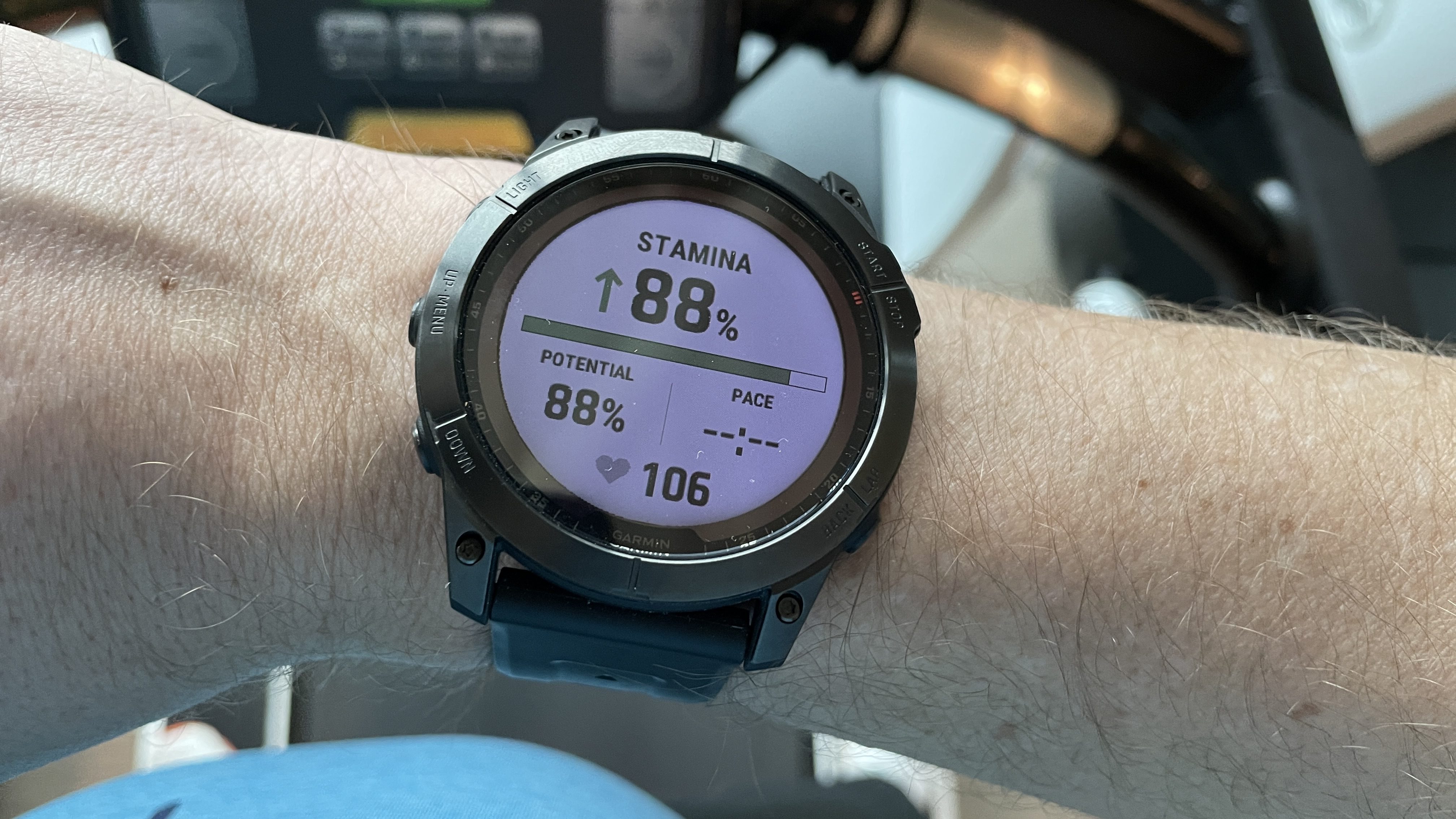

Initially there were three main models in Garmin’s Fenix 7 range: the Fenix 7S, the Fenix 7 and the Fenix 7X. With standard, Solar and Sapphire Solar Editions, plus a choice of stainless steel or lighter titanium casing, it made for a total of 22 different watches across the line-up. The newer Fenix 7 Pro actually simplified this a lot, by ditching the non-solar option.
Whichever you go for, all are in the top-tier price bracket for sports watches and represent a pretty serious investment. I think the Fenix 7 Sapphire Solar edition hits the bang for buck sweet spot. It offers excellent solar-boosted battery life, mapping and nav smarts, plus there’s a tougher sapphire screen and a wrist-friendly titanium case.
The nearest alternatives are Garmin’s own Epix (which has an AMOLED screen), the COROS Vertix 2 (which lasts even longer with GPS enabled) and the Polar Grit X2 Pro, which ticks almost the same boxes as the Fenix. Finally, anyone looking for a more budget-friendly fitness tool should consider the Coros Pace 2.
If you don’t care about having a touchscreen and that mega battery life, or you want a smaller, lighter watch the Garmin Forerunner 945 is your best bet. This carries a similar set of training and general features just in a less hefty frame.
Features
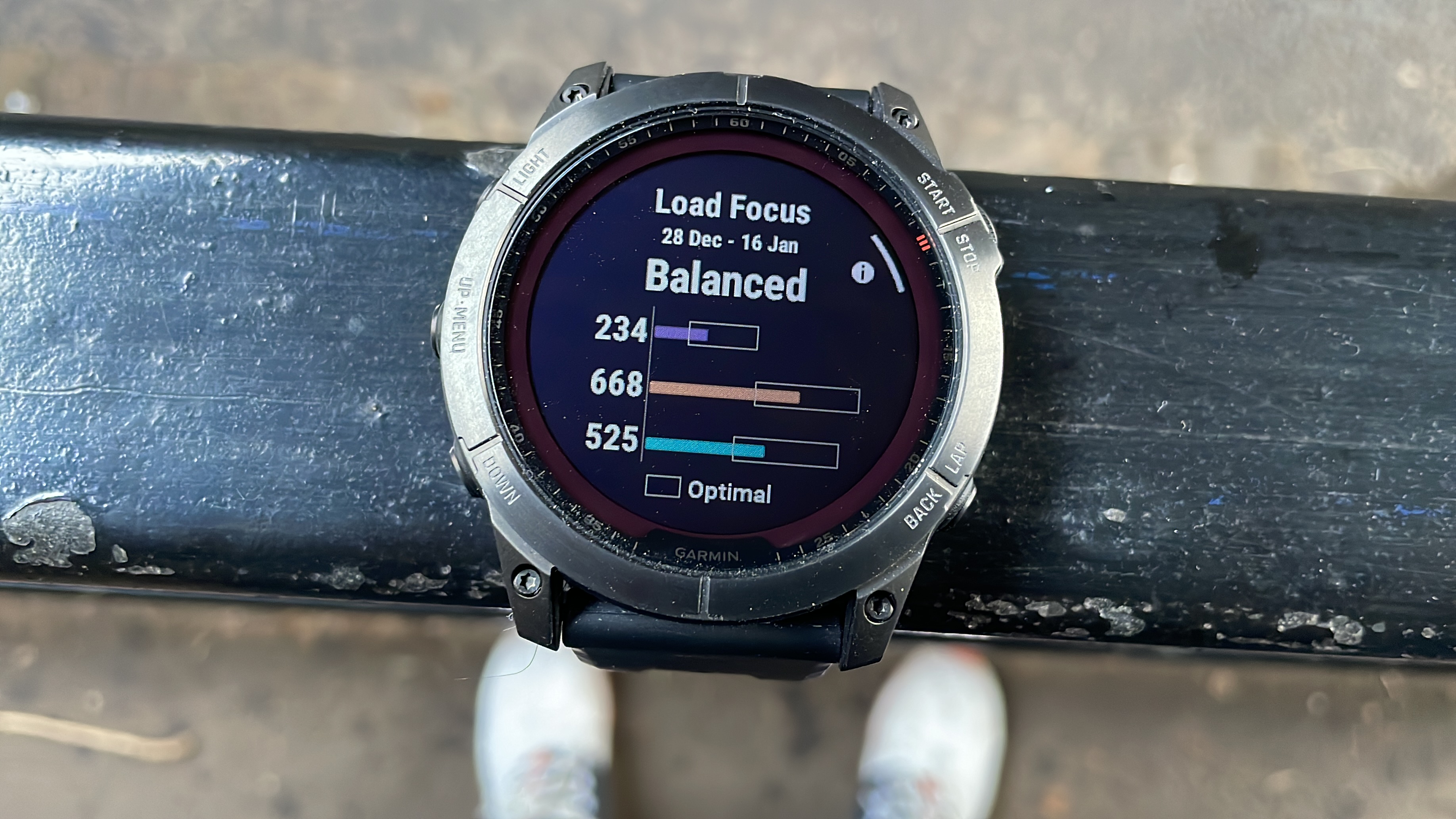
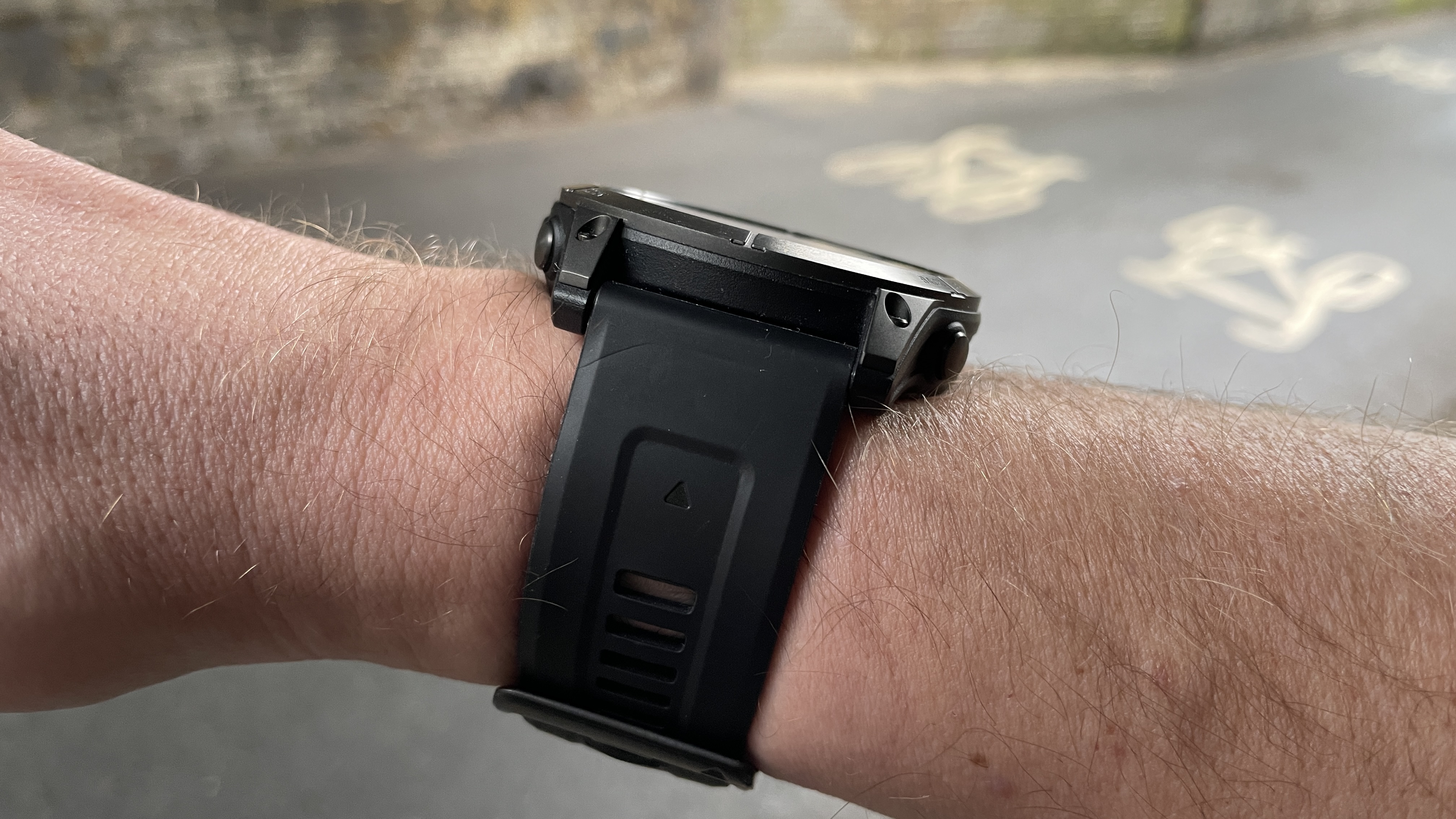
This is a serious tool for serious athletes. As you’d expect, the Fenix 7 offers dedicated profiles for more than 30 activities including trail running, swimming, running, biking, hiking, rowing, skiing, golfing, surfing, and indoor climbing. You name it, it tracks it. This generation adds a new dedicated HIIT workout mode, making it easy to set the number of rounds and work/rest intervals for AMRAP, EMOM, Tabata and custom sessions.
All the familiar Garmin training tools are here as well, including suggested workouts, Garmin Coach, training load and training effect monitoring, and recovery time recommendations. You can monitor how your sweat and tears convert into fitness gains with altitude and heat-adjusted VO2 Max fitness estimates. Plus Garmin’s running race time predictor now comes with a useful trend chart, so you can see if you’re closing in on your goal. You can also get mid-run performance feedback that compares your current level to previous outings. I found the accuracy could still be sketchy, though.
Garmin has also added a new training metric, Stamina. Designed to help you avoid busting out too hard at the start of your run or activity, this uses your training history and metrics like VO2 Max, max heart rate and lactate threshold to give you a dynamic read on how much gas you’ve got left in the tank at different paces. You see a percentage of stamina remaining and an estimated distance you can sustain at your current intensity.
Of course, many of these training tools rely heavily on heart rate and the Fenix 7 features a new-generation optical heart rate tech that aims to boost wrist-based accuracy. My testing revealed a familiar tale for wrist-based tracking, with the usual lagging and lurching on occasions during runs and workouts with big, sudden shifts in intensity. The max heart rate reads were often higher than a chest strap. Up against the Epix too, the Fenix had a tendency to read my non-workout heart rate higher.
In short, get a chest strap if you want to make the most of all the excellent BPM-based training and performance insights.
Outside of training, that tech powers the 24/7 heart rate tracking which feeds general health tools like Body Battery – a fairly reliable estimate of your daily stress and energy levels – sleep tracking (with hit and miss accuracy) and heart health, with optional high and low alerts. You can also keep tabs on blood oxygen levels with the built-in pulse oximeter, monitor breathing rate and log hydration – though that’s done manually.
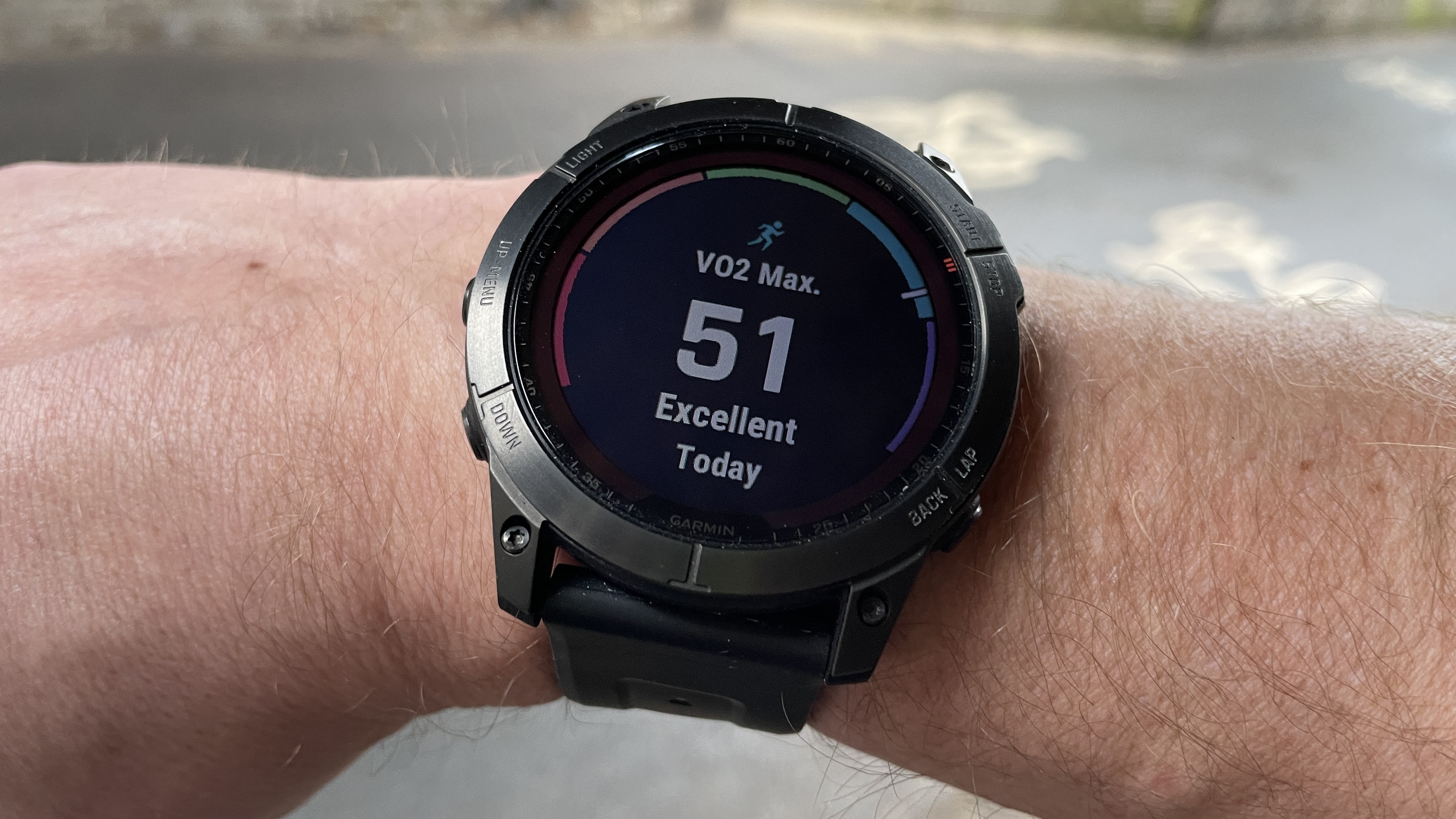
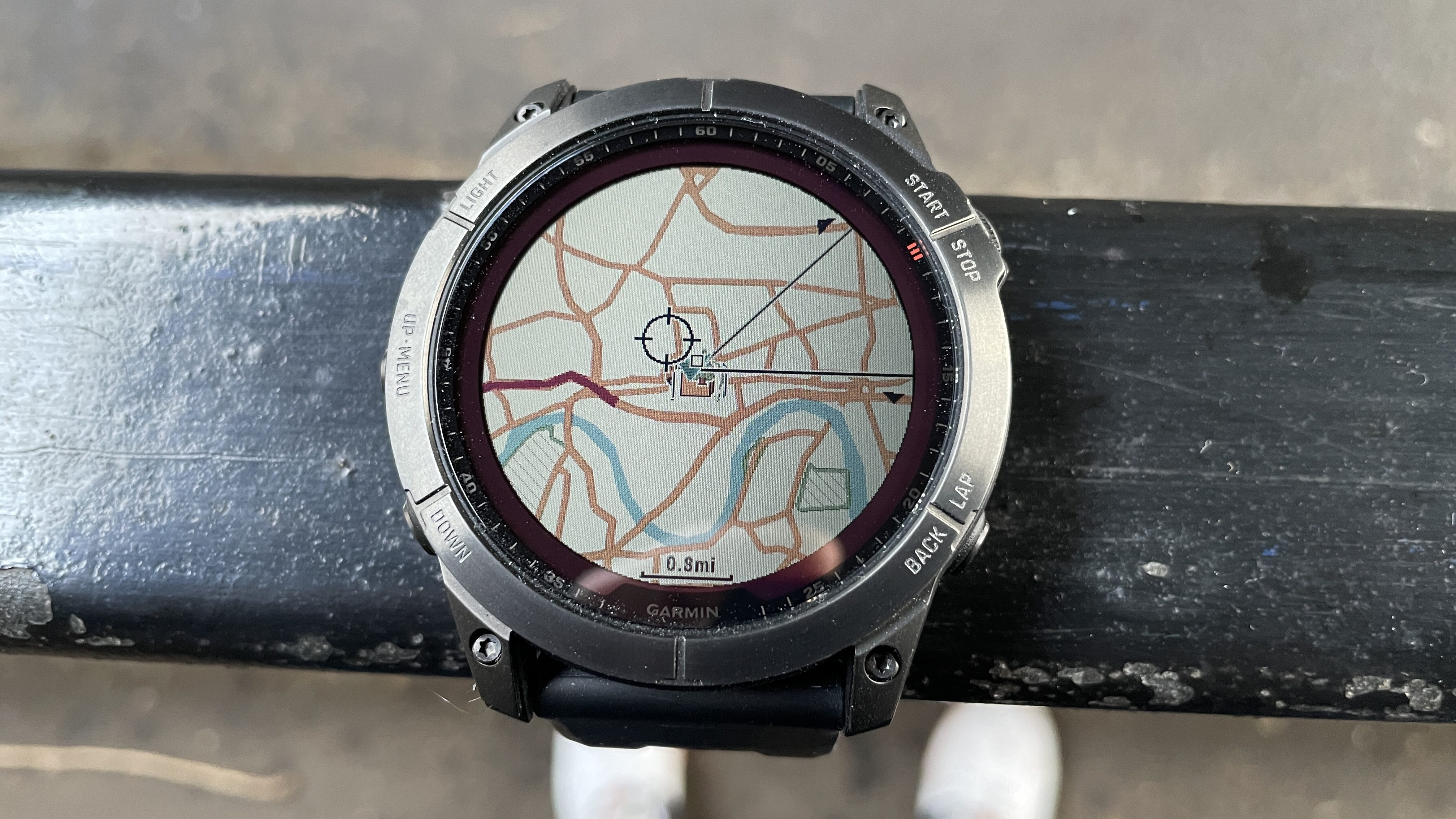
For gym goers and heavy lifters, strength mode has automatic rep counting. The accuracy is still really hit and miss, depending on the drills, but it’s relatively easy to edit rep counts on watch during rest periods.
The Fenix has always been Garmin’s navigation powerhouse and you now get precision multiband-GNSS (albeit only on the Sapphire Solar Editions). Garmin says this gives you “access to multiple frequencies sent by navigation satellites for improved position accuracy in area where GNSS signals are reflected, weak or typically don’t penetrate.”
I found general GPS performance was on par with the Garmin Enduro and the Vertix 2. But when it comes to that accuracy-boosting multi-GNSS and multi-band mode, I thought it made little difference versus regular multi-GNSS. Post-workout maps still showed me running in rivers and up against the Enduro and Epix, all came in around the 10% margin for error that you’d expect with GPS performance. I also found it tricky to discern any marked improvements to real-time pacing reliability; it certainly wouldn’t be the main driving factor in shelling out extra for the Sapphire Solar editions that come with multi-band.
Another upgrade from the Fenix 6 is the addition of multi-continent TOPO maps. These come preloaded on the solar sapphire editions but can be downloaded for the rest of the Fenix 7 range. It appears there’s no plans to make these available on the Fenix 6 series. Skiers also get treated to Skiview maps including run names and difficulty ratings for more than 2,000 ski resorts worldwide.
Garmin’s music smarts are here too. You get offline storage and playback for playlists from your Spotify, Deezer or Amazon Music. Connecting wireless headphones to run phone-free is wonderfully simple and connectivity was solid. The addition of the touchscreen also made managing the smart notifications and contactless payments much easier.
Battery life
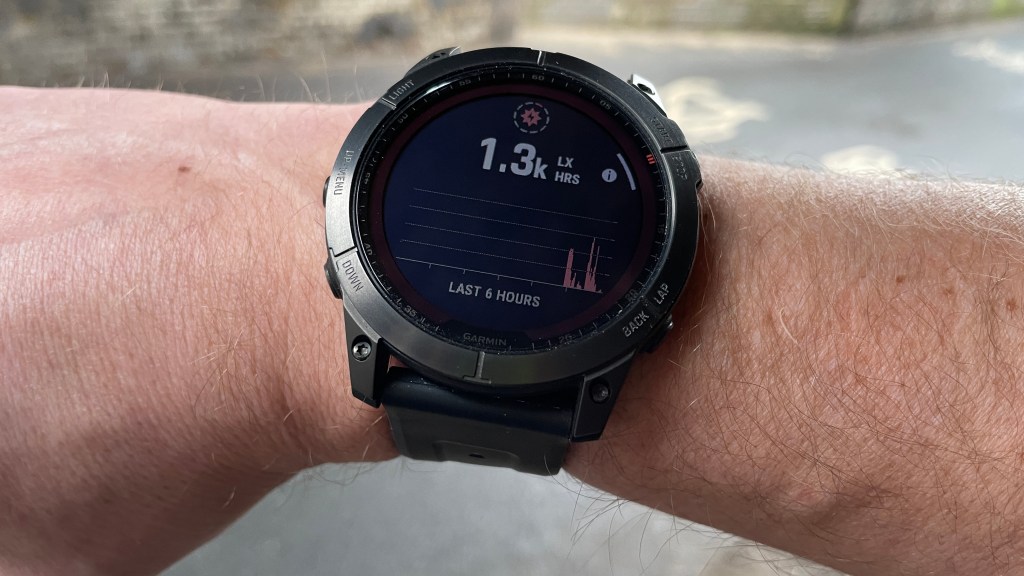
On paper, the Fenix 7X boasts up to 89 hours of battery life with full GPS enabled. That can stretch to 122 hours in perfect solar conditions. It’ll also extend to 101 hours in UltraTrac mode but drops down to 40 hours when you enable multi-GNSS multi-band settings for extra accuracy – less if you’re using music.
It largely lives up to billing too. After 15 days, including 10 hours of full GPS and multiband GNSS workouts, I’d only torched 51%. An hour’s GPS workout cost around 2% battery life. On average, the battery burn rate doubled when using muti-GNSS multi-band mode compared normal GPS mode.
The battery skills aren’t restricted to longer staying power either. Garmin’s Power Manager is a stand out tool that lets you create your incredibly granular, fine-tuned custom power modes. For example, you can choose to switch off optical HR, toggle maps on and off, manage the backlight and, of course, change the GPS tracking frequency.
Garmin Fenix 7 verdict

This is more watch than most people need, at a considerable price many won’t be able to afford.
But if your budget stretches – and your fitness pursuits demand it – the Garmin Fenix 7’s impressive combination of rugged durability, serious battery endurance, excellent navigation skills and the richest suite of training analysis, wellness and smartwatch skills, make this the best all-rounder sports watch you can buy right now.
Stuff Says…
It comes in many forms, but whichever you go for, the Garmin Fenix 7 remains the best all-rounder outdoors adventure watch you can get.
Pros
Outstanding battery life
Excellent durability
Offline mapping
Cons
Bulky on the wrist
Pricey
Garmin Fenix 7 technical specifications
| Smartwatch battery life | 11-28 hours |
| Non solar GPS Battery life | 37-89 hours |
| Solar GPS battery life | 46-122 hours |
| Screen | 1.2-inch, 240×240; 1.3-inch, 260×260; 1.4-inch, 280×280 |
| Dimensions | 42 – 51 mm (case) |
| Weight | 63g-96g |
| Water resistance | 10ATM |
| GPS | Glonass/GPS/Galileo with multiband GNSS |
| Sensors | Optical heart rate, Pulse Ox, altimeter, barometer, compass |
| Connectivity | Wi-Fi, Bluetooth and ANT+ |


